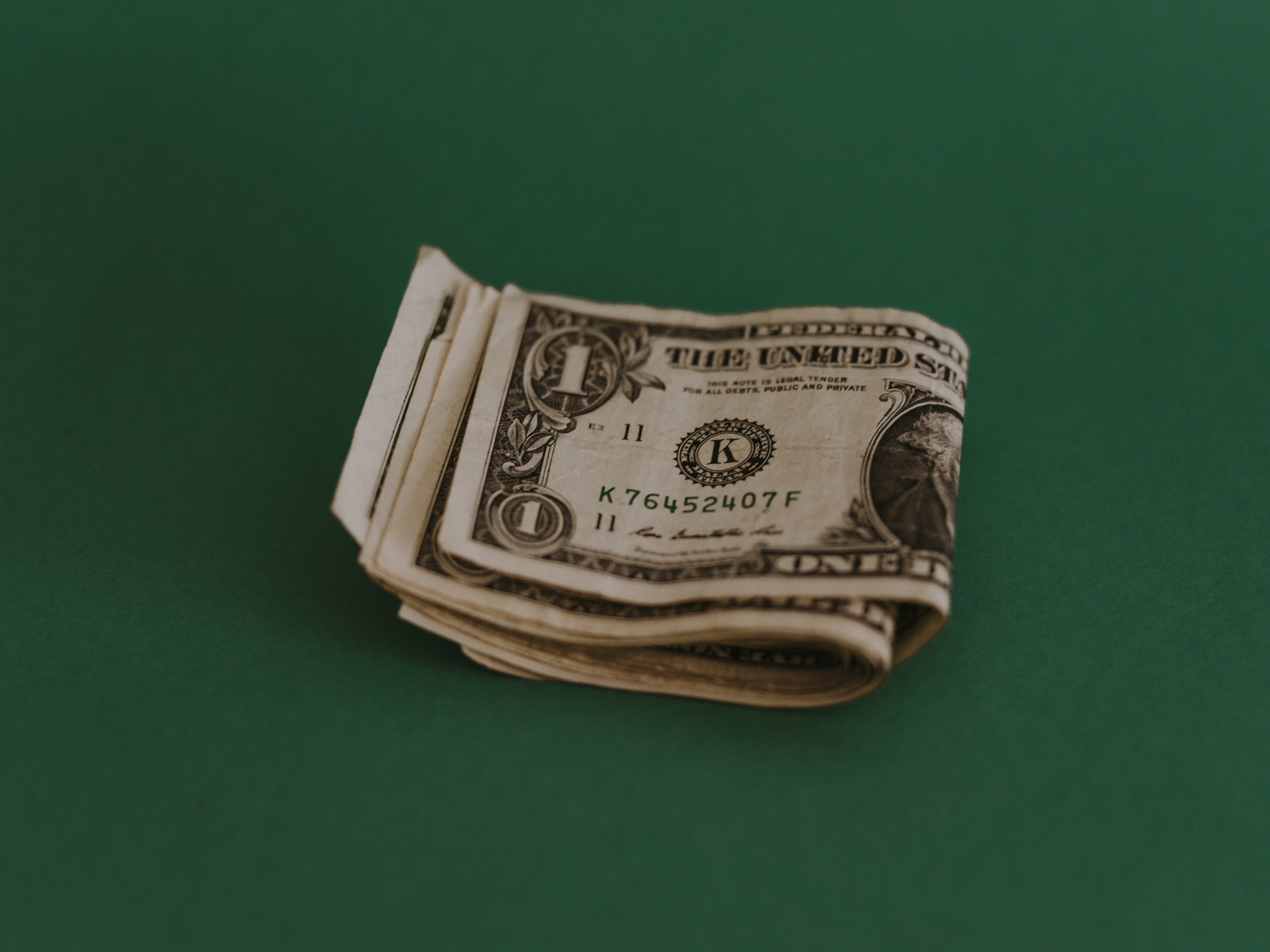Janna Parker Discusses Poverty, Inequality, & The Basic Income Legislation
Each week, in various communities throughout the county, religious and government institutions hand out thousands of pounds of food to those living at or below the poverty line and to people who have not financially recovered from the pandemic, which is still ongoing. Census data for Prince George’s County shows poverty at 11.5 percent, 16 percent for children under 18 years old, and 9 percent for seniors. Maryland's overall poverty level is at 10.3 percent, which is lower than the county’s poverty level.
Photo by Annie Spratt from Unsplash.com
In 2022, The Capital Area Food Bank, an organization that distributes food to various institutions in the region, released the results of its annual report. The report showed how the pandemic further disrupted the lives of the working poor and those living in extreme poverty in the DMV. It reported that 1.2 million households “didn’t always know where their next meal would come from at some point during 2021.” Specifically, Prince George’s County leads the region in food insecurity, 48 percent. Of those 48 percent, 31 percent are experiencing severe food insecurity, and 17 percent are food insecure - totaling 48 percent. The inequality in Prince George’s County among people of color (this includes Black people) is visible. Neighbors along the borders of Washington, D.C. are the poorest. However, some of the neighborhoods farthest away from the city are the most affluent.
Recognizing the problem, PG County Changemakers, a grassroots non-profit organization based in Prince George’s County, began supporting the implementation of a basic income. On April 4, the county council passed legislation to implement a basic income program, one modeled after San Diego basic income program.
I had a chance to interview Janna Parker, executive director of PG Changemakers. Parker talked to me about poverty, inequality in Prince George’s County, and the basic income programs that could work in the county. She proposes that we need real legislation that helps to deal with the county’s intergenerational poverty. She thinks the basic income program is a start, but certainly not the silver bullet. As of now, the program has not been fully funded. This interview has been edited for clarity.
Why do you think poverty in Prince George’s County is not talked about enough?
Poverty in Prince George's County is something that we don't talk about often because for so long we've touted the fact that we were the most prosperous Black county in America. This was true in the sense that Black people living in the county had more access to wealth and financial opportunities compared to any other county in Maryland. (Note: Charles County is now considered the wealthiest Black county, but, it seems, data is based on income). However, that narrative doesn’t consider the county’s numerous pockets of poverty and how those pockets affect the county overall. The county's prosperity narrative overshadows the reality that we have underfunded schools; certain communities lack access to parks, green spaces; childcare; and healthcare facilities. But other communities in Prince George’s County have access to all these amenities.
When some people in power (politicians and business leaders) talk about poverty, they say, ‘Hey, look what I did. I did a turkey giveaway, and I did a back-to-school surprise drive. I did a food giveaway.’ All those things are great, but they should be done in conjunction with policy, legislation, and procedures that help to lift people out of poverty. So it's a multi-leveled conversation. I think Prince Georgians as a whole do not want to discuss this because it takes away from this veneer that all Black people in the county are succeeding. But that’s not the reality.
Would you say that there is economic inequality in Prince George’s County?
Yes, there is economic inequality in Prince George’s County. When you’re a person living in poverty, and you come to the people who are middle class or wealthy, they tell stories about how they pulled themselves up by the bootstraps. They also say impoverished people are irresponsible and, therefore, deserve to be in poverty. This is the mindset of some middle-class and wealthy people, regardless of race. This mindset mirrors the toxicity that we see from non-people of color. People of color are perpetuating classism founded in communities of non-color, and people of color are just mimicking that toxicity within their communities.
Who does the basic income program target?
So the program parameters are still being worked out. However, it will target a variety of groups. They are trying to narrow down the specifics. Seniors are definitely a part of that group. We have a large population of senior citizens who are living at or below the poverty line. Everyone talks about how much they love the seniors, but we have to ask, ‘What is being done in a legislative capacity to consistently support them?’ A guaranteed basic income is going to provide some level of support. We are looking to include formerly incarcerated people, people with children, working-class people, and immigrant families.
This GBI program is modeled after the one in San Diego, which gave its participants $500. Why did this one choose to give $800?
The GBI program is piloted in several cities throughout the U.S. Those program's financial disbursements range from $300 to $1200. It really depends on how many people are in the program and the amount of money that is put into the program. The dollar amount that is being provided from the county council's perspective takes into account several different factors. It takes into account how much money is going to be put into the program, how many families are going to participate in the program and the cost of living.
I know that there is a gap in funding. Has that gap in funding been resolved yet? Or is that still an ongoing issue?
That is something that has to be resolved. Although County Executive Angela Alsobrooks has said this is a good idea and a good program, she hasn't adjusted the budget to allocate funds to the GBI program. The county council would have to think of ways to allocate this money appropriately. At the end of the day, this is something that the county council has voted on; they know what our community needs. We need more than someone saying they support it. We need actual action behind it. I think the funding gap is based on the lack of redistribution of funds in a budget from the county executive.
Where would the funding come from?
When you look at the budget, it could come from various areas. We spend a lot of our money on other agencies that, to be frank, have support nationally and locally. Therefore, we don’t need to support those agencies in such an extensive capacity.
Can you explain the Prince George’s County Basic Income Coalition?
This coalition is a group of organizations –PG Changemakers, Life After Release, the NAACP, and CASA – that came together to make sure the people who are directly impacted are at the table helping to craft policy to ensure that the people we support are the ones that have access to this GBI funding. With programs like this, you see a lot of people leading them, but they have no direct interaction with the communities or the people that will be served by the program. We just want to make sure that this is what is going to be done, and want to make sure it is enforced.
The coalition first moved to make sure that we supported the policy passing. Now, as the policy is going to be done in conjunction with the Greater Washington Foundation, we want to work together to ensure that it is being done correctly.
So after the residents go through the 24 months, what will happen at the end of those months?
Well, this is another reason why it is important to have people on the ground who are working with the community to be a part of the decision-making process, policies, and procedures. We want to make sure that it's a gradual step down; a gradual release of funds to make sure that the financial funding isn’t immediately stopped. Secondly, as we looked at other cities that have done this, we have found that some people have been able to move up the socioeconomic ladder, pay some much-needed bills and pay off the debt. So what we're hoping for is that people will be able to put themselves in a better financial position. We're hoping that at the end of these 24 months, we can show how this program helped residents. We hope to expand it to more communities of color within the county.
Read More Of Our Work





